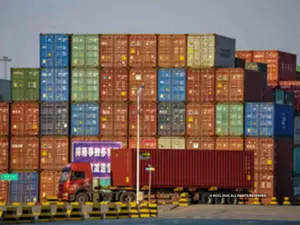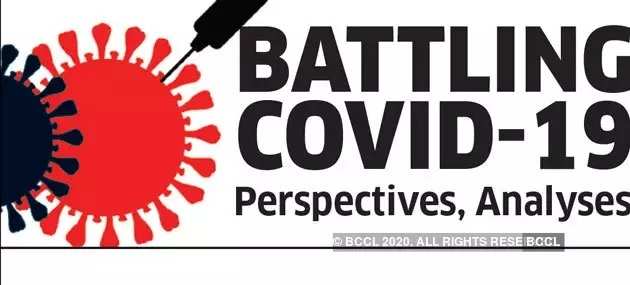
In this backdrop, it’s logical for countries to proactively step up domestic manufacturing and explore politically viable alternate supply chains — not just as a back-up but as national necessity.

COVID-19 CASES
WorldIndiaConfirmed4,421Deaths114Confirmed1,345,048Deaths74,565The coronavirus pandemic, by the time it’s done, would have set the stage for altering the global power dynamic. International institutions are already coming under severe scrutiny and stress, while the good old nation-state, riding on strong nationalist sentiments, seems to be taking centre stage.
The reason is two-fold: one, because of the way in which countries are fighting the onslaught of Covid-19 on their own; and two, the failure of global institutions to influence China’s actions and, thus, contain the economic fallout.
While the spread of the virus has been global, the fight against it has been national, with each individual government compelled to devise its own ways to cope with the crisis. Politically, governments have largely relied on national resolve — almost like fighting a big war — to deal with the situation, especially the immeasurable loss of human lives.

India has been no exception. If South Korea has fought the Covid-19 battle on the back of its strong public healthcare network, India has relied on its public administration system. Constrained by its limited healthcare capabilities, its fight has been built around enforcing social distancing and heavy contact-tracing. Three key areas need highlighting. First, the trust on efficacy of the colonial-era district administration system. The trinity of the district magistrate, superintendent of police and the chief medical officer of the district form the core unit eventually ensuring and enforcing the lockdown.
Second, carrying out heavy police-led human-intensive contact-tracing. The massive effort underway to trace the extent of the Tablighi Jamaat cluster in the world’s second most populous country is the best illustration of this approach. If India is able to deal with the unexpectedly big numbers impacted from this cluster, it would be because of its ability to conduct large-scale mass contact-tracing. And the principal reason for that, like it or not, has been the last-mile beat policing system.
Third, the relatively more recent working disaster management structure from the district-level up. This system has evolved over the past decade and become robust in some states prone to natural disasters. Odisha, for instance, which has had to regularly cope with cyclones, seems to have finetuned this system rather well and is able to execute pre-emptive measures better than some other states.
At a broader level, if India is able to pull through this challenge, GoI would believe that the oft-criticised administrative structure has actually delivered. In other words, the State has emerged stronger. And this, with national variations, appears to be the holding narrative in most countries as governments have had to look inwards to find ways to protect their lot.
Now, to the question of China and its impact. This not about whether China is responsible for the spread of Covid-19 or not. That would be myopic. The real problem is that the pandemic has brought to the fore the overdependence of the global economy and its supply chains on China.
The world had to first deal with the economic consequences of the epidemic engulfing China. Now, when the situation has improved there, many countries are struggling to secure their medical supplies from China, which is ostensibly playing hard to get amid growing demand.
In both situations, countries had to play along with Beijing because of their overdependence on supplies and equipment. India, too, has had to explore some sort of a government-to-government arrangement with China to obtain certain urgent healthcare supplies. China’s political clout has been such that neither the World Health Organisation (WHO) nor the United Nations (UN) could get a say in deciding timelines for action, or to ensure transparency in the initial phase of the outbreak from Beijing.
As a result, with no international arbiter able to exert influence on either the health or supplies side on China, it was left to the governments of individual countries to literally fend for themselves. India, for instance, did not have a single known manufacturer of personal protective equipment in the first week of February. Now, there are reportedly five or six. The situation forced GoI to create domestic capacity, just like with ventilators where the auto sector has been exploring options.
Many countries, including the US, are beginning to realise that overdependence on China has tied their hands in dealing with the spread of the pandemic. Worse, it has hugely constrained them in fighting the virus in their own countries.
In this backdrop, it’s logical for countries to proactively step up domestic manufacturing and explore politically viable alternate supply chains — not just as a back-up but as national necessity. Which is why it’s vital that India’s post-lockdown strategy has a plan to position itself accordingly – as well as to bear a positive impact on the stressed domestic economic situation.
Politically, a more powerful State facing Covid-19 challenges will push for better data-gathering and surveillance on the population. There’s no reason why the Indian State would hold back, given its experience with contact-tracing.
The world as we know it is set for a major change. The manner in which India exits the lockdown will demonstrate how prepared India is, the efficacy of its system, and its reliability as a global alternative for the future.
Views expressed are author’s own
Source: indiatimes.com

